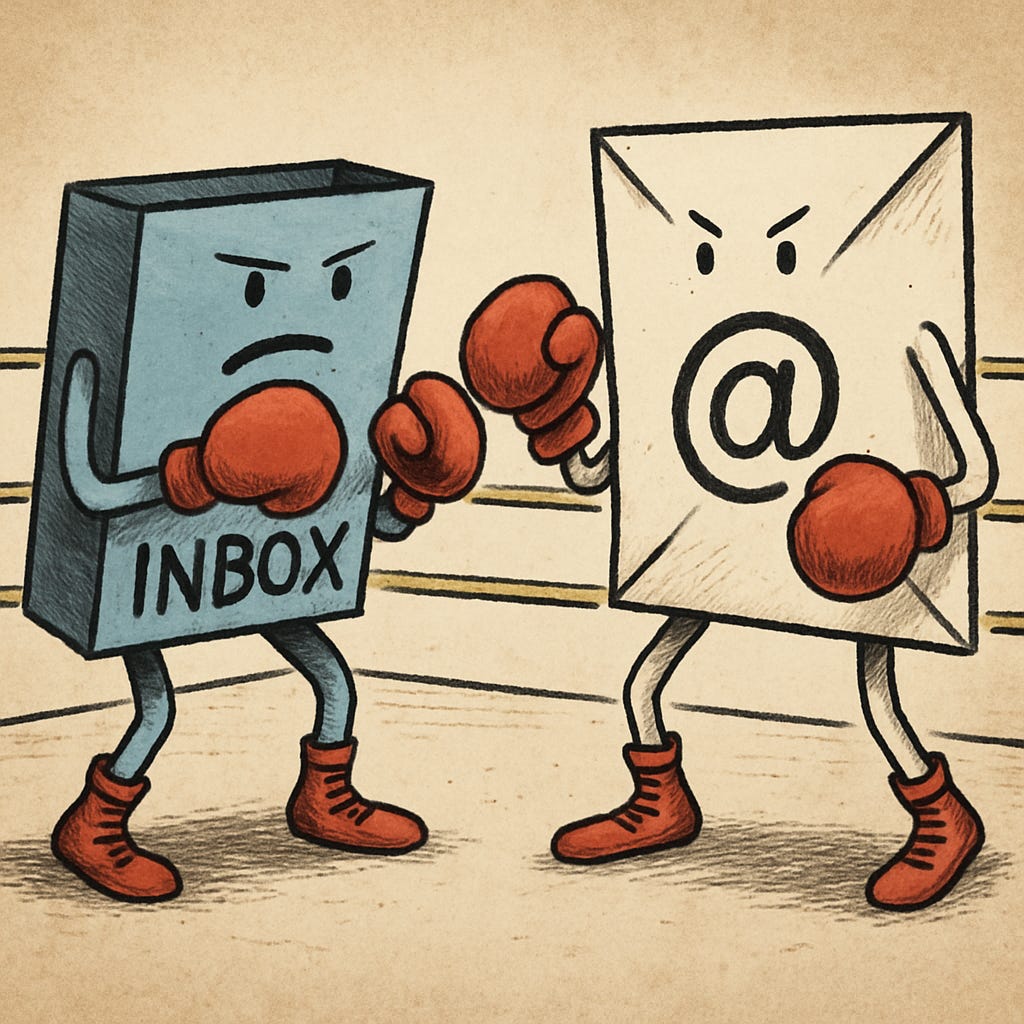The Complete Email Infrastructure Stack
Week 6 of the Making Time Email Mastery Series
TLDR: Email infrastructure is surprisingly complex, even though individual pieces are simple. Here's a practical framework for building the stack that supports your email strategy without over-engineering it.
Read Time: 4 minutes
Note: There are two more emails left in this special mini-series on email strategy for business growth & leadership. To manage your preferences on which kinds of emails you get from me, you can do that here. I also have a poll at the end of this post to help me learn more about where you’re at with this!
Hi Timeless Leaders,
I started getting deep into email infrastructure about 1.5 years ago, and I'm still amazed at how complex and opaque it can be, even though certain parts are rather simple.
At Box, I got my first exposure to truly scaled sending when working with different marketing teams that used Iterable and Marketo to reach millions of users. But it was only when I tried building my own systems that I started to grasp the infrastructure complexity.
My first attempt at this was with Infusionsoft in 2012-2013. It wasn't just the tool complexity that got me. With my fledgling startup I learned that scalable email infrastructure requires dedicated marketing expertise and often significant revenue ($500K+) to justify the investment. Yet at the same time, I could see that if you could set it up right, you'd have a machine that facilitates revenue growth for any worthwhile solution.
More recently the evolution of cold outbound emails since 2021 has blown me away. ZoomInfo (founded in 2007) and Apollo (founded in 2015) made it possible to build targeted contact lists at scale. New tools emerged to manage multiple secondary domains and inboxes. Specialized providers started offering foundational infrastructure (domains, DNS, deliverability) as plug-and-play services.
This created an arms race.
Providers like Microsoft and Google cracked down on what they considered "spam"—which increasingly sought to find any message sent as part of a high-volume campaign, even it it had personalization. Suddenly, tools like Yesware and native CRM sales sequencers couldn't support cold outbound because the trust standard became much higher. Primary domains got burned faster. Deliverability became harder. And even if you cleared those hurdles, getting a prospect's attention became much harder because everyone's guard was up.

Today's post is a practical framework for the infrastructure that supports serious email programs. These 5 layers represent the complete architecture of effective email infrastructure. Every business needs something in each layer—the sophistication within each layer grows with your business maturity and resources.
The 5 Layers of Email Infrastructure

Layer 1: Foundation
Domains, DNS, and security
Primary domain for business communications
Marketing subdomains (e.yourdomain.com) and handles for newsletters and promotions
Secondary domains and inboxes for cold outbound protection
DNS authentication: SPF, DKIM, DMARC records
GDPR/CAN-SPAM compliance and data protection protocols
Layer 2: Data & List Management
Quality data systems and maintenance
Opt-in forms and lead magnet systems
Email validation and verification (e.g. NeverBounce)
Research & data enrichment platforms (e.g. Apollo, ZoomInfo, Clay)
List hygiene and engagement monitoring systems
Contact database architecture and backup systems
Layer 3: Sending Infrastructure
Purpose-built tools for different email types
Cold outbound: Smartlead, Instantly
Warm marketing: Substack, ConvertKit, Mailchimp, ActiveCampaign
All-in-one for growing businesses: HubSpot, GoHighLevel, Zoho, Klaviyo
Enterprise: Salesforce, Marketo, Iterable (complex workflows, dedicated teams)
Key insight: Match tools to use case and business maturity. Avoid consumer tools for enterprise needs or enterprise tools before you have the team to manage them.
Layer 4: Content Creation & Optimization
Tools for creating what people want to read
AI writing assistance (Claude, ChatGPT, specialized email writing tools)
Design and template tools (Canva, Adobe, email platform builders)
A/B testing and performance optimization
Content libraries and approval workflows
Layer 5: Automation & Integration
Systems that connect and scale
Welcome sequences and behavioral triggers
CRM integration and lead scoring; data synchronization
Multi-channel automation (social → email → calls)
Internal communication integration (Slack, Teams)
How Infrastructure Evolves
From my perspective, a good way to think about how your infrastructure evolves is to look both at your sending volume and your budget. The more budget you put on your program, the more you can scale… but it’s also worth letting the budget follow somewhat based the size and quality of the recipient list.
Here’s a rough breakdown of what I’m seeing working for lots of the entrepreneurs and agencies I interact with:
It’s not that you need to spend that much to move higher up in scale, but there are some non-negotiable expenses as you go, and opportunities for stronger performance if you spend on the right tools and expertise that match each level. More spend, especially on a quality team, can also accelerate your readiness to play at the next level.
Tell me about your infrastructure
I'm curious where you are with email infrastructure.
Wherever you are, I’m glad you’re reading. Email is the backbone of organizational growth, and getting it right is essential for advancing your lasting legacy.
Feel free to leave a comment to share what about this is helpful, or if there’s anything you’d like me to address in the final two posts.
Talk soon,
-Joe
P.S. Next week we'll explore how to use AI to scale your email program without losing the human touch—unless I get overwhelming interest in some other email topic.


